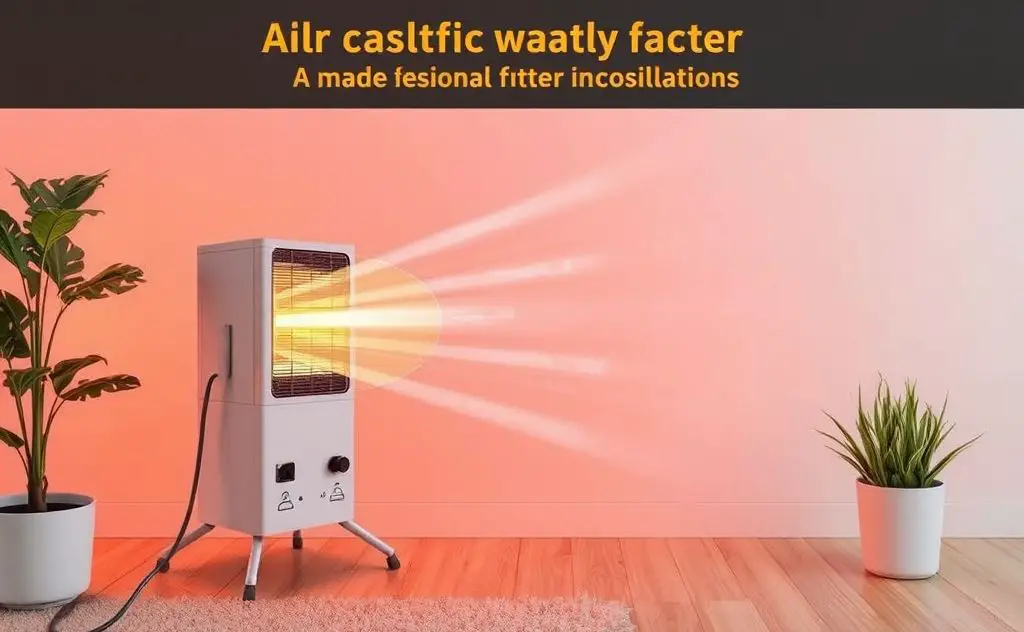Electric heater types, such as convection, radiant, and fan-forced, can impact indoor air quality by influencing humidity levels, dust circulation, and temperature consistency.
Choosing the right electric heater affects more than warmth—it impacts your home’s air quality. Different heater technologies interact with indoor air in distinct ways, from drying effects to particle emissions. Understanding these differences helps create a healthier heating solution.

Electric Heater Types and Their Air Quality Effects
Modern electric heaters fall into several categories, each with unique air quality considerations:
Ceramic Heaters
Ceramic heaters use heated ceramic plates with aluminum baffles. They’re generally cleaner than combustion heaters but can still affect air quality:
- Produce minimal particulate matter when clean
- Can dry indoor air significantly
- May emit slight odors when new or dusty
For optimal air quality with ceramic heaters, regularly clean the unit and consider pairing with a humidifier to combat dryness.
Oil-Filled Radiators
These sealed units heat diathermic oil that radiates warmth:
- No direct air emissions (sealed system)
- Gentler on humidity levels than forced-air heaters
- Can accumulate dust on fins, reducing efficiency
According to U.S. Department of Energy, oil-filled radiators provide more consistent heat with less air disturbance than fan-forced models.
Infrared Heaters
Infrared models emit electromagnetic radiation that heats objects directly:
- Minimal air movement means less dust circulation
- Some models may emit visible red light that disturbs sleep
- Quartz tube elements can degrade over time
Fan-Forced Heaters
These common heaters blow air across heated elements:
- Can circulate dust and allergens
- May emit a burning smell if dust accumulates on coils
- Significant drying effect on indoor air

Key Air Quality Factors to Consider
Humidity Impact
All electric heaters reduce relative humidity by warming air (which increases its moisture-holding capacity). This effect is most pronounced with:
- Fan-forced convection heaters
- Ceramic tower heaters
- High-wattage models in small spaces
Particulate Matter
Heaters can affect airborne particles through:
| Heater Type | Dust Circulation | Combustion Particles |
|---|---|---|
| Oil-Filled | Low | None |
| Ceramic | Medium | None |
| Infrared | Low | None |
Chemical Emissions
New heaters may off-gas from:
- Wire insulation
- Plastic components
- Manufacturing residues
The EPA recommends ventilating rooms when first using new electric heaters to dissipate any manufacturing residues.
Optimizing Heater Use for Better Air Quality
Maintenance Practices
Regular care reduces air quality impacts:
- Clean filters monthly in fan-equipped models
- Dust radiators and fins weekly
- Inspect heating elements for discoloration
Supplemental Solutions
Pair heaters with air quality devices:
- Humidifiers to combat dryness
- Air purifiers with HEPA filters
- CO detectors near any fuel-burning units
For those using propane heaters indoors, proper ventilation is critical despite their convenience.
Safety Considerations
Beyond air quality, heater safety affects overall indoor environment:
- Choose units with automatic shut-off features
- Maintain clearance from combustibles
- Use dedicated circuits for high-wattage models
